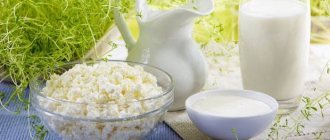Nutrition for stomach and duodenal ulcers: approximate menu
The diet for stomach and duodenal ulcers has worked well despite the cure and complete destruction of the ulcers within 2-3 weeks. Restoring the gastrointestinal tract by removing the main pathogen does not mean that all its functions will soon be normalized. If you have had this disease with prolonged treatment, doctors strongly recommend following a healthy diet for stomach ulcers.
During the period of an ulcer in the stomach, the main damage is hydrochloric acid, so during this disease, try to remove foods that affect the secretion of gastric juice. To weakly stimulate secretion, it is worth including only healthy foods in the menu that will not worsen the condition of the body. To eliminate and prevent all influencing factors, it is worth learning about proper nutrition for stomach and duodenal ulcers, which can subsequently restore the health of the body
Basic nutrition rules
The diet for duodenal ulcers has its own distinctive features. Not only the range of products is important, but also the method of preparing them, the time of consumption, and the size of the portions. Therapeutic nutrition involves split meals. Some rules must be followed exactly as prescribed. Only by taking into account all the nuances will the process of healing the disease be accelerated, and you will feel significant relief from your condition.
The main principles of diet, as well as selection of foods for duodenal ulcers:
- meals should be frequent - approximately every 3 hours;
- food should not irritate the mucous membrane of the stomach and duodenum;
- the diet should have increased nutritional value and include a sufficient amount of fats, proteins, carbohydrates, mineral salts and vitamins (necessarily A, C and B vitamins);
- products included in the diet should not have a strong juice-containing effect;
- Eating very hot or cold food is prohibited; it should be at room temperature;
- it is necessary to reduce the daily consumption of table salt to 10-12 g;
- food should not mechanically irritate the gastric mucosa; try to eat all food in pureed form;
- One meal should not contain a large amount of food.
The main task in the treatment of gastric and duodenal ulcers is to restore the functioning of all processes occurring in the body. Ordinary milk copes well with this task, being one of the most useful food products for people with peptic ulcers. Milk contains a large number of substances necessary for the body.
Ulcer - what is it?
This is a chronic disease accompanied by the formation of defects (ulcers and erosions) on the mucous membrane of the stomach and duodenum. In 70% of cases, the pathology develops in men between the ages of 20 and 40 and is accompanied by frequent relapses, especially in spring and autumn.
Content:
- Ulcer - what is it?
- Diet principles
- Prohibited Products
- Authorized Products
- Medicinal products
- Diets for ulcers
- FAQ
- Menu for a week during an exacerbation of a stomach ulcer
- Conclusion
As a result of exposure to excess hydrochloric acid and enzymes, the lining of the stomach is damaged and an ulcer occurs.
According to statistics, 14% of the world's population suffers from the disease.
The main cause of the disease is an imbalance between aggressive factors and the protective mechanisms of the stomach.
Factors that increase the risk of developing ulcers include smoking, poor diet, frequent stressful situations, abuse of alcohol, carbonated and caffeine-containing drinks, taking anti-inflammatory drugs on a regular basis (such as ibuprofen), Helicobacter infection, eating hot or cold foods that damage the gastrointestinal tract .
Overstrain of the nervous system is accompanied by spasms of blood vessels and muscles in the digestive tract, which leads to impaired circulation in the gastric mucosa and a decrease in its resistance to the aggressive effects of gastric juice.
The prognosis of peptic ulcer disease depends on the localization of the process, the age and gender of the patient, the presence of complications, the characteristics of the clinical course of the pathology, household and professional factors. In advanced, severe stages, complications may develop that require surgical intervention.
Diet No. 1
Follow table 1. Diet No. 1 is the recommended standard for patients with peptic ulcer disease. During the period of exacerbation, for ten to fifteen days, adhere to “table 1a”, which involves eating foods in liquid or jelly form.
In the future, it is recommended to switch to “table 1b”, which corresponds to pureed and mushy food. During the period of stable remission, one should be guided by the rules of the standard “diet 1”, which provides for the loose consistency of products, their consumption in grated or well-chopped form.
What can you eat?
Your diet should consist of foods that allow the stomach to produce hydrochloric acid in smaller doses.
Allowed foods for stomach ulcers:
- Bread: 1st and 2nd grade wheat, stale, crackers, dry biscuits.
- Dairy products: milk, cream, non-sour kefir, yogurt, non-sour cottage cheese and dishes made from it (cheesecakes, dumplings, casserole, pudding), non-sour sour cream.
- Meat: chicken, turkey, beef, veal. Chopped meat is better - cutlets, meatballs, boiled or baked meatballs. You can eat it as a whole piece, but boiled.
- Soups: vegetable, pureed, in a slimy broth with the addition of boiled vegetables; milk soups; soups with the addition of pureed meat, oatmeal soup, rice soup, with pureed cereals.
- Vegetables: zucchini, pumpkin, beets, carrots, cauliflower, potatoes. Better boiled or stewed.
- Fish: low-fat varieties - pike perch, perch, pike, cod, hake, navaga, etc. boiled, baked, in whole pieces or in the form of cutlets, in jellied fish.
- Eggs: up to 2 times a day, soft-boiled, in the form of a steam omelet or eggs in dishes.
- Mild cheese, grated.
- Greens: parsley, dill, etc.
- Porridge: semolina, oatmeal, buckwheat, rice, ground cereal.
- Pasta, vermicelli, boiled in water or milk.
- Ripe fruits and non-acidic berries: strawberries, raspberries, wild strawberries, baked apples or in the form of puree, jelly, compotes.
- “Doctorskaya” sausage, milk sausages.
- Unsalted butter with sandwiches or in dishes, vegetable oil - without frying.
- Sweet dishes: jelly, honey, jam, preserves, marshmallows, marshmallows.
- Warm mineral waters (all hydrocarbonate) are recommended, 50-100 ml 1.5 hours before meals.
- Drinks: weak tea with milk, vegetable juices (carrot, apple-carrot), juices from sweet fruits and berries 1:1 with water, rose hip decoction.
Rules for preparing dishes for stomach ulcers
For peptic ulcers, long-term adherence to treatment table No. 1 is indicated. As a rule, doctors recommend sticking to it for 6 months or more. Dietary dishes for stomach ulcers meet all the requirements of a balanced diet, so the body will not experience nutritional deficiencies, and the patient will not experience hunger.
In order for the healing process to proceed without the development of complications, simple rules must be followed in detail when preparing dishes:
- The total energy value should be in the range of 2000-2100 kcal per day. Moreover, fats – 70 g, proteins – 140 g, carbohydrates – 230 g.
- Any unhealthy food (smoked, fried, salted) is completely excluded from the diet. They can only be steamed, stewed or boiled. It is allowed to bake food in the oven, but such dishes are included in the menu only once a week.
- To prepare dietary dishes, you must use only natural and fresh products. It is better to prepare a new dish for each meal.
- All diet dishes for stomach ulcers should consist of well-cooked (soft) foods. In the first stages of peptic ulcer disease, it is better to avoid solid foods. Porridges and soups are prepared according to the recipe, crushed to a puree or rubbed through a sieve.
- Do not eat hot or cold foods, which negatively affect the gastric mucosa. Comfortable food temperature is 37 degrees.
- To avoid overeating, you should eat food slowly, chewing it thoroughly. Portions should be small (approximately 200 g). You need to eat up to 6 times a day. Snacks are allowed, but only healthy foods.
- Particular attention is paid to dishes made from dairy products on the menu. They do not cause active digestion, so less hydrochloric acid is released in the gastric juice.
Advice! New foods should be introduced into the diet gradually, monitoring how the body reacts to them. But we should also not forget about the drinking regime; you need to drink at least 2.5 liters per day. liquids.
What can't you eat?
We exclude products that especially increase the release of hydrochloric acid. Prohibited foods for ulcers:
- Fresh rye and white bread, puff pastry and pastry products; it is better to eat dried bread.
- Fatty, stringy meats (pork, duck and goose).
- Strong meat, fish broths, mushroom and strong vegetable broths.
- Vegetables: white cabbage, onions, cucumbers, rutabaga, turnips, sorrel, radish, spinach, pickled and pickled vegetables.
- Smoked and fried foods, fried fatty, salted fish, canned food.
- Sour, unripe berries; sour dairy products.
- Ice cream, chocolate.
- Cereals: millet, corn, pearl barley.
- Fried and hard-boiled eggs.
- Spicy, salty snacks, smoked meats, canned food.
- Fat: lamb, beef, pork.
- Fried foods.
- Carbonated drinks, kvass, strong tea, black coffee.
- Spicy meat, mushroom, tomato sauces, spicy cheese, pepper, vinegar, garlic, mustard, horseradish.
Diet after surgery
The standard recommendation is to fast for up to two days for the initial healing of the sutures. In the future, the following requirements are adhered to.
- On day 3. The patient can eat in accordance with the 0a diet, provided that he does not have bloating. Meals are split, up to seven times a day. The consistency of the dishes is exclusively liquid or in the form of jelly. The first meal should be the smallest, in the amount of one teaspoon. In this quantity, the patient is offered hourly juices diluted with water, fruit jelly, and weak meat broth. Over the course of two days, the volume of a single serving is increased and the patient is transferred to six to seven meals a day.
- On day 6. Gradual expansion of the diet and bringing it to the standard diet of table No. 1 by introducing pureed porridges, slimy soups, soft-boiled eggs or in the form of a steam omelet.
The diet should contain the maximum amount of protein components and vitamins, while carbohydrates, especially simple ones, should be kept to a minimum. This will allow you to saturate the diet with the spectrum of nutrients necessary for the patient in a small portion size.
Menu during an exacerbation period
During the acute period of the disease, you must carefully monitor your diet. Steam or boil food; sometimes you are allowed to bake food. Use a slow cooker - you can use it to make many tasty and healthy dishes that do not contradict the principles of therapeutic nutrition.
- First breakfast. A few soft-boiled eggs, wash down with a glass of milk. Instead of milk, you can drink herbal tea.
- Lunch. Weak herbal tea, fruit juice or milk, fruit for a snack - a baked apple, banana or peach.
- Dinner. Oatmeal soup or oatmeal. As an option, you can use steamed chicken soufflé, as well as fruit or berry jelly.
- Afternoon snack. Creamy curd dessert, vitamin infusion with rose hips. If you want something sweet, you can eat low-fat yogurt.
- Dinner. Milk porridge with rice (pre-mashed), one glass of milk. Another option is vegetable puree or boiled chicken breast.
- After dinner. Before going to bed, it is recommended to drink a glass of milk again, do not eat anything else, so as not to burden the stomach.
Desserts for stomach ulcers
Sweet foods, such as cakes and chocolate, are contraindicated for people with ulcers. Healthy desserts prepared at home, such as cottage cheese casserole, can and even should be consumed. Doctors allow them to be included in the diet after the acute stage of stomach and duodenal ulcers has passed.
It is important to remember that such a dish should be light and non-acidic, moderately sweet. If you do not adhere to this condition, then even dietary desserts can harm your health and lead to an exacerbation of peptic ulcer disease. Let's look at recipes for delicious desserts.
Advice! Industrially prepared sweet products include marshmallows, marshmallows, jelly, and marmalade.
Carrot pudding
The recipe for the dish is quite simple. To prepare this dish you will need:
- carrots – 2 pcs.;
- sour apples – 2 pcs.;
- cottage cheese – 50 g;
- egg – 1 pc.;
- sugar – 15 g;
- sour cream - 1 tbsp;
- semolina – 2 tbsp.
Semolina and grated apples without peel are added to the chopped carrots. The cottage cheese is ground through a sieve and sent to the mass. Add the remaining ingredients there and mix thoroughly.
Separately, beat the egg whites with a pinch of salt to sharp peaks and mix into the curd mixture. Form balls and send them to cook in a water bath for about 20 minutes. Delicious and healthy pudding is ready!
Berry soufflé
Soufflé with berries is prepared from the following ingredients:
- any sweet berry (raspberry, strawberry) – 0.5 cups;
- sugar – 1-2 tbsp;
- egg white – 3 pcs.
Fresh berries are washed well and ground through a sieve. The resulting mass is diluted with sugar and salt is added (optional). Then cook over low heat until thick.
Beat the egg whites well and then combine with the cooled berry mixture. The resulting mass is placed in small molds greased with oil. Bake in the oven for 15 minutes at 180 degrees.
Currant jelly
Preparing this dish is not difficult; you only need a minimum amount of ingredients:
- currants (fresh or frozen) – 2 tbsp;
- gelatin, sugar - 1.5 tsp each.
To begin with, juice is squeezed out of the berries, which is then put in the refrigerator. While the juice is cooling, prepare gelatin as indicated in the instructions on the package. The berry pulp remaining after squeezing is put on fire and boiled for 15 minutes. The resulting broth is filtered and cooled. Then sugar is dissolved in it and heated again over the fire until it boils.
The boiling process is accompanied by the formation of foam, which must be removed. Then add diluted gelatin into the mixture and mix thoroughly. Take the cold juice out of the refrigerator and add it to the mixture. The last stage is to pour the syrup into molds and put it in the refrigerator for several hours. Ready jelly can be consumed after 3-4 hours.
During a peptic ulcer, you should strictly follow all the specialist’s instructions and adhere to the treatment menu. During this period, you need to avoid dishes that contain foods that irritate the gastric mucosa.
You can expand your diet with the permission of your attending physician; he will provide a list of permitted and prohibited foods, and only after the pain has been relieved. Dishes specially designed for the treatment of stomach ulcers will help speed up recovery and restore the body after this dangerous disease.
Sample menu
Diet for 2 days, designed for 1 person. Portion sizes are approximate. You can reduce or increase them, depending on how you feel.
- Breakfast: sandwich (white wheat bread with butter) - 1 piece; yogurt - 100 g; mineral water without gas - 200 ml.
- Second breakfast: soft-boiled eggs - 2 pcs.; rice porridge - 150 g; fruit puree - 100 g; milk - 200 ml.
- Lunch: chicken soup - 250 ml; cutlet; boiled pasta - 100 g; white bread - 1 slice; fruit soufflé - 100 g; applesauce - 100 g; dried apricots (soaked in water) - 3 pcs., milk - 200 ml.
- Afternoon snack: steam cutlet - 150 g; mashed potatoes - 150 g; white wheat bread - 1 slice; raisins (soaked in water) - 40 g; rosehip decoction - 200 ml.
- Dinner: boiled beef - 150 g; soft-boiled eggs - 2 pcs.; vegetable salad - 150 g; white wheat bread - 1 slice; fruit jelly - 100 g; milk - 200 ml.
Second day:
- Breakfast: sandwich – 1 pc. mineral water without gas – 200 ml.
- Second breakfast: steam omelette of 2 eggs; semolina porridge – 150 g; tea with sugar – 200 ml.
- Lunch: vegetable soup - 300 ml; beef meatballs - 1 50 g; green peas - 100 g; jacket potatoes - 100 g; white wheat bread - 1 slice; fruit jelly - 100 g; tea without sugar - 200 ml.
- Afternoon snack: oatmeal porridge - 200 g; white wheat bread - 1 slice; milk - 200 ml.
- Dinner: boiled fish - 150 g; vegetable puree - 100 g; soft-boiled egg - 1 pc.; white wheat bread - 1 slice; milk - 200 ml.
If the peptic ulcer is quite severe and you are experiencing severe pain, it is best to stick to the above menu.
Main courses for stomach ulcers
When the period of exacerbation has passed, and the clinical manifestations of the disease have disappeared, you can use recipes for second courses for stomach and duodenal ulcers. Main courses can be steamed or baked in the oven.
Advice! It is better to bake food and cook dietary dishes in the oven over low heat. This will avoid the formation of a crust, which is harmful for peptic ulcers.
Recipes for stomach ulcers usually consist of lean meat, vegetables, eggs, and dairy products. All products (especially meat) must be purchased from trusted sellers, and not in a store.
Steam cutlets
Steamed cutlets go well with almost any side dish allowed for stomach ulcers. Any dietary lean meat can be used as the main ingredient. For example, veal, rabbit, beef, turkey or chicken. To prepare 1 serving, you will need the following set of products:
- selected type of meat – 100 g;
- wheat (yesterday's) bread - 1 piece;
- olive oil – 1 tsp;
- water or milk – 15 ml;
- salt - a pinch.
The meat should have a uniform consistency and tender, so it should be minced several times. Olive oil, salt and bread soaked in water are added to the finished minced meat. The cutlets are kept in a water bath for 40 minutes.
Advice! Boiled rice, potato or vegetable puree are suitable as a side dish.
Fish pudding
Products prepared in the form of pudding will be useful for gastrointestinal diseases. For example, meat or vegetable puree. As you know, seafood is rich in vitamins and microelements, which are so necessary during the recovery period after a stomach ulcer.
Therefore, fish should become an integral part of any diet. To prepare fish pudding, you need to take:
- lean fish fillet – 100 g;
- milk – 2 tbsp;
- white bread - 1 piece;
- yolk - 1 pc., white - 2 pcs.;
- butter – 1 tsp;
- salt - to taste.
One part of the fillet is boiled in water, the other is rolled through a meat grinder. Bread soaked in milk is added to the minced fish. Then both parts are mixed, butter and yolk are added. Whisk the whites into a strong foam and then carefully fold them into the fish mass. The resulting mixture is poured into small molds.
Beef soufflé with cottage cheese
Beef soufflé with cottage cheese is another recipe on the menu that meets the dietary requirements for stomach ulcers. To prepare the dish you need to take the following products:
- boiled beef fillet – 200 g;
- low-fat cottage cheese – 50 g;
- butter – 10 g;
- yolk – 1 pc., white – 1 pc.
Meat and cottage cheese are passed through a meat grinder several times. Oil and yolk are added to the resulting minced meat. Whipped protein is introduced gradually. The minced meat is formed into small balls, which are then steamed.
Advice! Instead of cottage cheese, you can take any vegetables, for example, potatoes, zucchini, pumpkin, etc. They not only give the dish a unique aroma and taste, but also enrich it with healthy vitamins.
Nutrition during recovery
The principle of any therapeutic diet for peptic ulcers is as follows: the menu should include food that does not affect the walls of the affected internal organs either chemically, thermally, or mechanically. If you feel pain after eating any food, remove it from your diet.
- First breakfast. Omelet or steamed eggs prepared using two eggs or semolina with milk. Wash it down with a glass of milk.
- Lunch. Weak tea, milk or warm creamy cocoa. You can snack on fruit: banana or peach.
- Dinner. Milk soup with crushed rice, a piece of steamed meat, a small portion of mashed potatoes. For dessert - fruit jelly.
- Afternoon snack. A glass of rosehip infusion, a few crackers. Also eat jelly or cheesecake if you want something sweet.
- Dinner. Steamed curd soufflé, fruit jelly or fruit drink. Another option: rice patties with chopped lean beef or stewed zucchini.
- After dinner. Milk, a light salad of prunes and boiled mashed beets.
A properly chosen diet restores gastric secretion, relieves inflammation and irritation of the mucous membrane of damaged internal organs of the gastrointestinal tract, and also promotes rapid and painless healing of peptic ulcers. Use the tips described above and you will be able to help your body fight the disease and avoid possible negative consequences.
Cooking recipes
The range of permitted and prohibited foods for duodenal ulcers is only at first glance frightening with a large number of changes in the usual diet. Dietary food is a special section of cooking. From a simple set of products it is easy to prepare many tasty and healthy dishes. The main thing in this case is to adhere to the rules for processing and consuming individual ingredients. Here are some delicious and easy recipes:
- Diet pumpkin pudding. To prepare the dish you will need: 150 g pumpkin pulp, 10 g semolina, 10 g honey, 20 g low-fat milk, 140 g apples, 2 eggs. Grind the apples and pumpkin in a blender. Add semolina and milk, bring the mixture to a boil. Add honey and beaten eggs to the prepared mixture. The pudding should be prepared by steaming or in a slow cooker.
- Oatmeal with pumpkin. For 1 cup of rolled oats, prepare 2 cups of skim milk, 1 cup of finely grated pumpkin pulp, butter, two tablespoons of honey. Boil oatmeal with milk until tender. Mix the porridge with pumpkin and leave the mixture for 10-15 minutes, covering the pan with a lid. Add a small amount of butter and also honey.
- Vegetable cream soup. To prepare this dish, prepare the following ingredients: potatoes, carrots, turnips, skim milk, butter. Select the quantity of ingredients at your discretion. Boil all vegetables and chop in a blender. To dilute the mixture to a puree consistency, use vegetable broth and milk. Before eating the soup, place a small piece of butter in the plate.
The duration of a gentle diet depends on the general well-being of the patient. If therapy proceeds without complications, there is a tendency towards recovery, and you can adjust your diet after three to four months. The standard duration of diet therapy is six months.
First courses for stomach ulcers
There are many recipes for dietary dishes that are used for peptic ulcers. During an exacerbation of the disease, first courses will be especially useful. Soups for stomach and duodenal ulcers should be consumed at least once a day. For stomach ulcers, first course recipes do not include spices, seasonings, or fried vegetables.
The best breakfast option is soups in the form of puree or cream. They can be prepared using chicken broth or milk with the addition of vermicelli and cereals (buckwheat, rice, pearl barley). Dishes made from rich broth (cabbage soup, borscht) are completely excluded from the diet. But you should also avoid pea soup.
Rice soup with meat broth
Rice is extremely useful in the menu for ulcerative pathology. Soup, prepared from cereals according to the correct recipe, envelops a sore stomach, promoting the speedy healing of the wound. To prepare rice soup with meat for ulcer patients you will need:
- water – 300 ml;
- cooked rice - 1 tbsp. l.;
- boiled beef – 100 g;
- milk – 50 ml;
- egg – 1 pc.
The cooked cereal is rubbed through a sieve, and the meat is ground using a meat grinder. The crushed ingredients are mixed and boiled again. Lightly beat the egg with milk and add to the soup, cook for another 5 minutes.
Season the finished dish with sour cream and butter (1 tsp each). If desired, you can add pureed vegetables to the soup, for example, boiled potatoes and carrots, if this does not contradict the recipe.
Potato and pumpkin soup
For patients with stomach ulcers, you can prepare a vegetable slimy soup consisting of the following components:
- potatoes – 2 pcs.;
- pumpkin – 120 g;
- cream – 2 tbsp;
- greens, salt - optional.
Boil pumpkin and carrots in a small amount of water. The prepared vegetables are rubbed through a sieve and mixed with the remaining vegetable broth, salt and cream are added. Place on the fire again and bring to a boil. A hearty and nutritious soup is ready. Before use, sprinkle with chopped herbs.
Chicken soup
If you have a stomach ulcer, you can eat soups based on concentrated chicken broth 10 days after an exacerbation, when the symptoms of the disease are eliminated. In this case, you must strictly follow the recipe for preparing the dish. Poultry fibers neutralize hydrochloric acid secreted by gastric juice. To prepare chicken soup with rice and vegetables, take:
- water – 500 ml;
- chicken breast – 100 g;
- rice – 2 tbsp. l.;
- carrots, potatoes - 1 pc.
The chicken is boiled in water, then the finished meat is twisted through a meat grinder and returned to the broth. Add grated vegetables and rice and continue cooking for another 25 minutes. If desired, fresh soup can be pureed using a blender.











